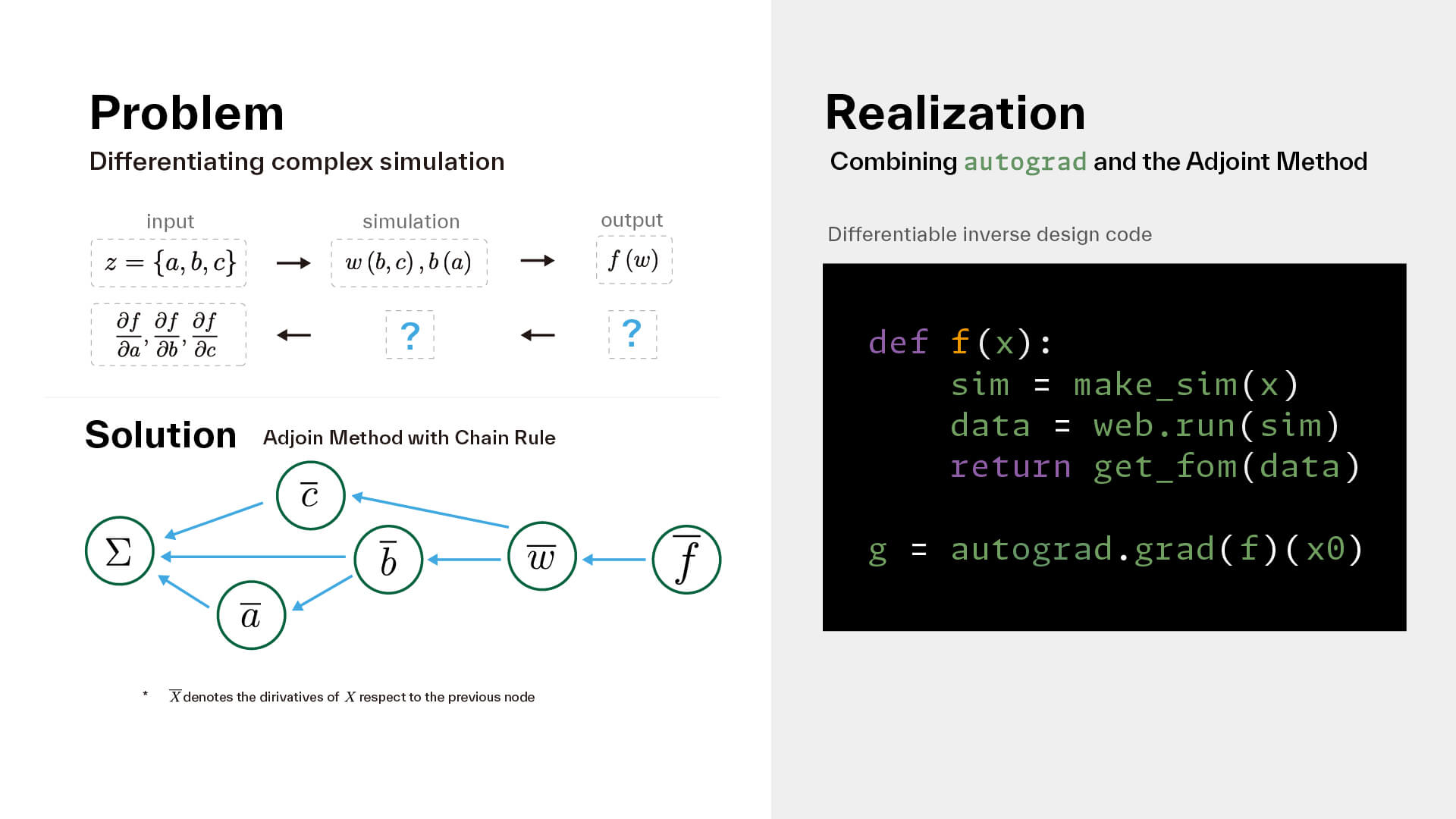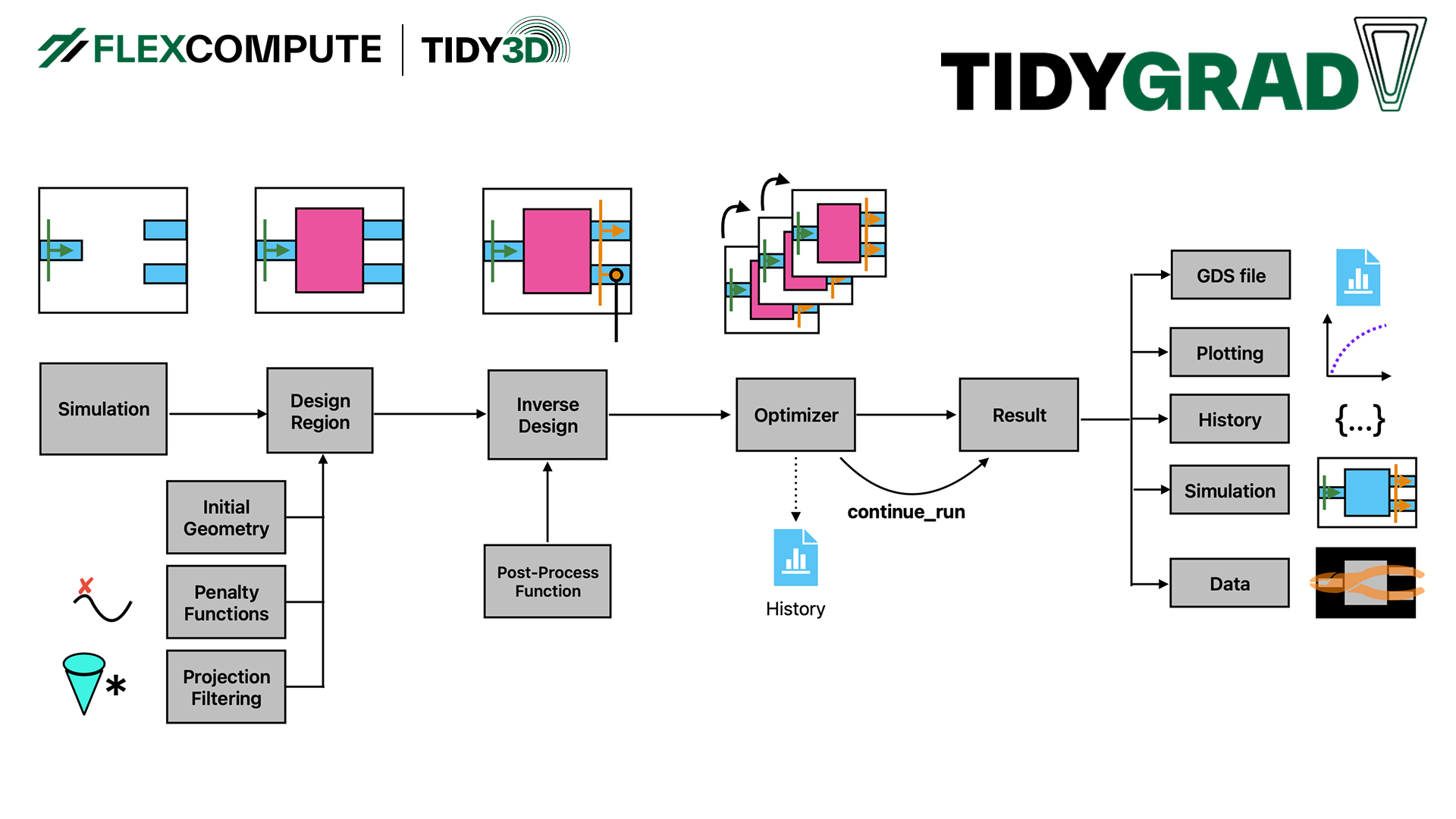Inverse Design
for Everyone
The world's easiest to use tool for inverse design. Leverage automatic
differentiation backed by Tidy3D's GPU-based FDTD solver to solve
your design problems effortlessly.
Trusted by more than 250 companies & academic institutions









































